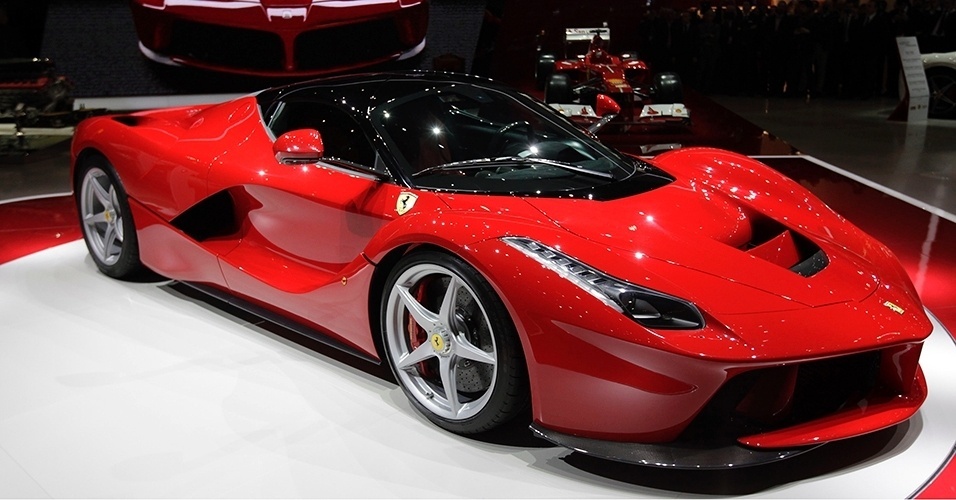    [size=1.5em]Code named the F150, the car that replaces the Enzo at the top of the Ferrari hierarchy made its debut today at the[size=1.5em] [size=1.5em]2013 Geneva Motor Show[size=1.5em], easily stealing the limelight from all other debuts. [size=1.5em]Code named the F150, the car that replaces the Enzo at the top of the Ferrari hierarchy made its debut today at the[size=1.5em] [size=1.5em]2013 Geneva Motor Show[size=1.5em], easily stealing the limelight from all other debuts.
[size=1.5em]We can confirm that its powertrain is a hybrid setup that pairs Ferrari’s 6.3-liter V-12 engine and seven-speed dual-clutch 'box with its HY-KERS hybrid setup to boost output and lower emissions.
[size=1.5em]The system consists of two electric motors, one mounted to the gearbox and sending drive to the rear wheels and the other used to take some of the load off the engine by powering auxiliary devices.
[size=1.5em]Peak output of the combined system is a staggering 963 horsepower, as measured in metric figures. In good ol’ American numbers that’s still 950 horsepower to play with. Torque comes in at more than 660 pound-feet, with the final figure not yet confirmed.
[size=1.5em]Ferrari hasn’t given final performance numbers just yet, but says the La Ferrari will reach 60 mph in under 3.0 seconds and reach a top speed in excess of 217 mph (expected to be 230 mph). The car’s closest rival, the McLaren P1, which also debuts in Geneva, has similar specs but has its top speed limited to 217 mph. Another area were the La Ferrari is said to outmatch the P1 is in the 0-186 mph sprint, which the Ferrari should do in 15 seconds versus the McLaren’s quoted 17 seconds. Fiorano lap in less than 1:20
[size=1.5em]Ferrari boasts a lap time of its Fiorano test track of less than 1:20, which is 5.0 seconds quicker than the Enzo and 3.0 seconds quicker than the F12 Berlinetta.
[size=1.5em]The La Ferrari follows in a long line of ‘special series’ cars from the famous Italian sports car manufacturer. From the GTO of the 1980s right up to the Enzo supercar launched last decade, Ferrari’s special series cars have always been heavy hitters and some of the best examples of the transfer of technology from Formula One to the road.
[size=1.5em]In the case of the latest car, two of the headline technologies is the new hybrid system, Ferrari’s first on one of its production cars, and a new carbon fiber monocoque developed by Ferrari’s F1 technical director Rory Byrne. According to Ferrari, the central structure displays 27 percent more torsional rigidity and 22 percent more beam stiffness than the Enzo’s already stiff core.
[size=1.5em]The structure features no less than four different types of carbon fiber, all hand-laminated and autoclave-cured in the racing department using the same design and production methods as the F1 car. This helped optimize the design: various functions were integrated (e.g. seats and battery compartment) into the chassis. The final curb weight, not confirmed yet, is expected to be around 2,800 pounds. Numerous benefits of hybrid tech
[size=1.5em]Purists may dislike the thought that Ferrari’s latest and greatest supercar is a hybrid, but the beauty of the system is that it not only cuts fuel consumption but it also allows for precise torque vectoring, traction control and brake force distribution. Ferrari claims a 10 percent reduction in the 0-124 mph sprint, along with a 40 percent reduction in emissions compared to a non-hybrid solution.
|